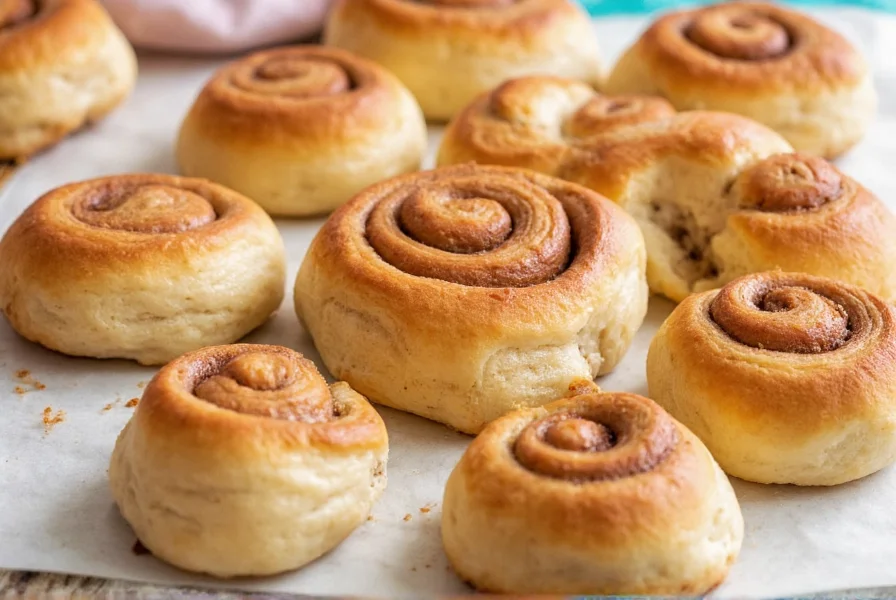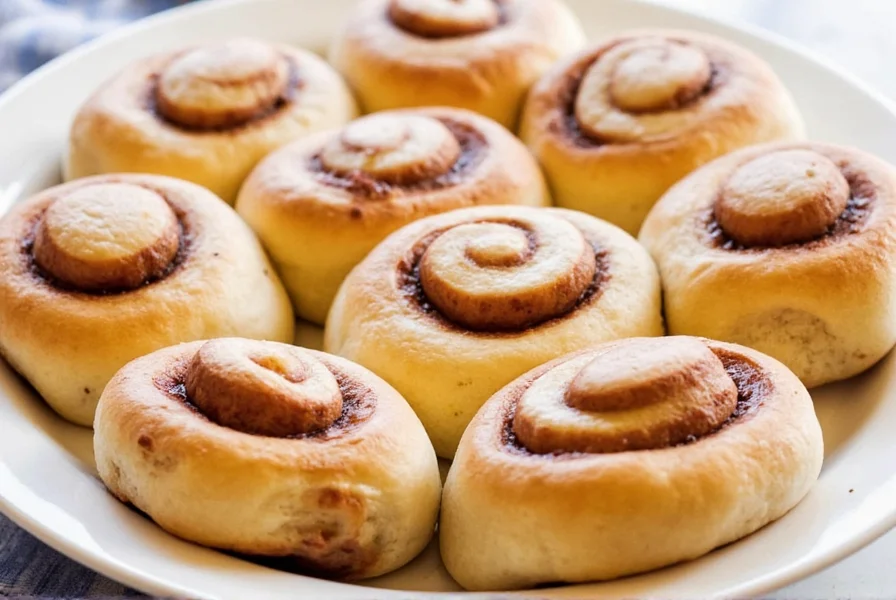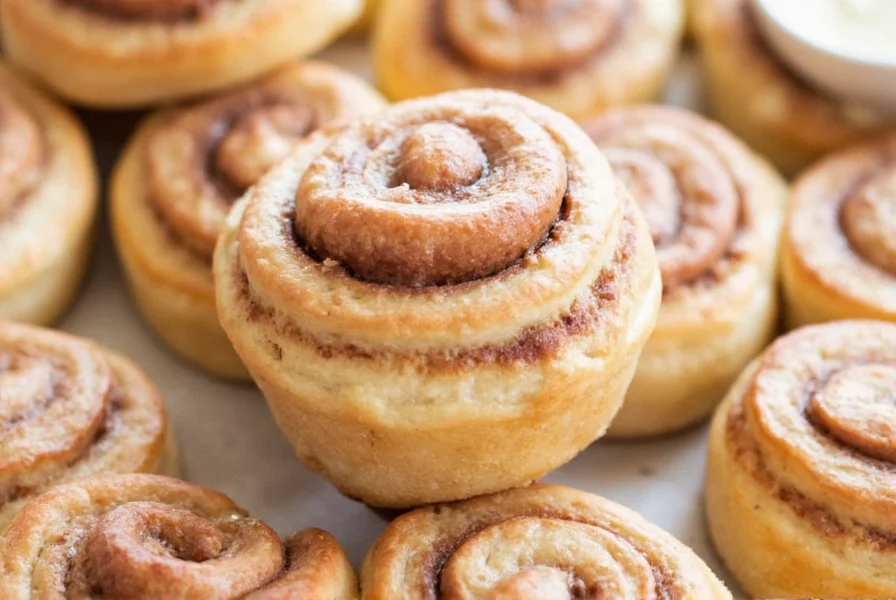When you're craving that perfect bakery-style treat, nothing satisfies like a properly made large cinnamon roll. These indulgent pastries have gained popularity for their impressive size and shareable nature, but achieving the ideal texture requires understanding specific baking principles that differ from standard cinnamon rolls.
What Defines a Large Cinnamon Roll
Large cinnamon rolls typically measure 4-6 inches in diameter, nearly double the size of traditional rolls. This increased dimension creates unique baking challenges that affect dough preparation, rising time, and oven temperature requirements. The key difference lies in maintaining that perfect balance between a fully cooked exterior and a soft, gooey center without overbrowning.
The Science Behind Successful Large Cinnamon Rolls
Creating perfect large cinnamon rolls requires understanding how size affects the baking process. Larger rolls need:
- Extended rising time - The increased dough mass requires additional fermentation time for optimal texture
- Lower baking temperature - Typically 25°F lower than standard rolls to prevent exterior burning
- Strategic filling placement - Concentrating filling toward the center prevents leakage during baking
- Specialized dough hydration - Slightly higher moisture content compensates for longer baking time
Professional bakers emphasize that the yeast-to-sugar ratio becomes particularly crucial in large cinnamon rolls. Too much sugar can inhibit yeast activity in the larger dough mass, resulting in dense, under-risen pastries.

Classic Homemade Large Cinnamon Rolls Recipe
This tested recipe yields six perfect 5-inch cinnamon rolls with that signature bakery texture:
| Ingredient | Measurement | Notes for Large Rolls |
|---|---|---|
| All-purpose flour | 3½ cups | Plus extra for dusting |
| Active dry yeast | 2¼ tsp | Ensure freshness for proper rise |
| Whole milk | 1 cup | Warmed to 110°F |
| Unsalted butter | ⅓ cup | Melted and cooled |
| Granulated sugar | ⅓ cup | Reduced from standard recipes |
| Egg | 1 large | Room temperature |
| Salt | 1 tsp | Balances sweetness |
Step-by-Step Baking Instructions
Follow these specialized techniques for perfect large cinnamon rolls:
- Dough preparation: Combine warm milk, yeast, and 1 tbsp sugar. Let sit for 5-7 minutes until foamy. Mix with remaining ingredients to form a soft dough.
- First rise: Knead 5-7 minutes until smooth. Place in greased bowl, cover, and let rise in a warm spot for 1½-2 hours until doubled.
- Filling preparation: Mix ½ cup softened butter with 1 cup brown sugar, 3 tbsp cinnamon, and ¼ tsp salt. Avoid adding liquid ingredients that could make the filling runny.
- Rolling technique: Roll dough into a 16x20 inch rectangle. Spread filling, leaving ½ inch border. Roll tightly from long side, pinching seam to seal.
- Second rise: Cut into 1½ inch slices (should yield 6 large rolls). Place in greased 9x13 inch pan with space between rolls. Cover and let rise 45-60 minutes.
- Baking: Preheat oven to 325°F (not 350°F). Bake 22-28 minutes until golden brown. The lower temperature prevents exterior burning while ensuring center cooks through.
- Glaze: Mix 4 oz cream cheese, ¼ cup butter, 1 cup powdered sugar, and 1 tsp vanilla. Drizzle over warm rolls.
Troubleshooting Common Large Cinnamon Roll Problems
Even experienced bakers encounter issues with oversized cinnamon rolls. Here's how to solve the most frequent problems:
- Dense texture: Usually caused by insufficient rising time or old yeast. Large rolls need complete doubling during both rises.
- Burning on bottom: Place baking pan on a lower oven rack or use a double pan to reduce heat exposure.
- Filling leakage: Ensure filling doesn't reach edges and maintain proper roll tension when shaping.
- Undercooked center: Insert toothpick into center; if sticky, return to oven at 300°F for 5-8 minutes.
- Collapsed rolls: Avoid over-rising during second proof; rolls should spring back slowly when gently pressed.

Creative Variations for Large Cinnamon Rolls
Once you've mastered the basic technique, experiment with these popular variations:
- Bacon maple: Add crumbled cooked bacon to filling and use maple syrup in glaze
- Apple cinnamon: Layer thin apple slices between filling and dough
- Streusel top: Add crumb topping before baking for extra texture
- Chocolate swirl: Incorporate cocoa powder into filling or add chocolate chips
- Overnight preparation: Refrigerate shaped rolls after second rise, then bake cold the next morning
Storage and Reheating Techniques
Proper storage maintains freshness of large cinnamon rolls:
- Store at room temperature for up to 2 days in airtight container
- Refrigerate for up to 5 days; reheat in microwave for 15-20 seconds
- Freeze individually wrapped rolls for up to 3 months
- For best results, reheat frozen rolls in 300°F oven for 10-15 minutes
- Avoid direct microwave heating for more than 10 seconds to prevent toughening
Conclusion
Mastering large cinnamon rolls requires attention to the specific techniques that accommodate their increased size. By adjusting rising times, baking temperatures, and filling techniques, you can create impressive pastries that deliver the perfect balance of fluffy dough, flavorful swirl, and rich glaze. Remember that patience during the rising process and careful temperature control during baking are the keys to achieving professional-quality results at home.
Frequently Asked Questions
How long should large cinnamon rolls rise before baking?
Large cinnamon rolls need 1½-2 hours for the first rise until doubled in size, followed by 45-60 minutes for the second rise after shaping. The second rise is complete when the rolls have expanded to nearly double and spring back slowly when gently pressed.
What's the ideal baking temperature for large cinnamon rolls?
The ideal baking temperature for large cinnamon rolls is 325°F, approximately 25°F lower than standard rolls. This lower temperature ensures the center cooks thoroughly without the exterior becoming over-browned. Baking time typically ranges from 22-28 minutes.
Why do my large cinnamon rolls collapse after baking?
Large cinnamon rolls collapse when over-risen during the second proofing stage. The dough structure becomes too fragile to maintain its shape when exposed to oven heat. To prevent this, ensure the second rise stops when rolls have increased by about 50%, not doubled. They should spring back slowly when gently pressed with a fingertip.
Can I make large cinnamon rolls ahead of time?
Yes, you can prepare large cinnamon rolls ahead of time using the overnight method. After shaping and placing in the pan, cover tightly and refrigerate for up to 18 hours. Remove from refrigerator 30 minutes before baking, then bake as directed. The cold dough will need 3-5 minutes longer in the oven.
How do I prevent filling from leaking out of large cinnamon rolls?
To prevent filling leakage in large cinnamon rolls, leave a ½-inch border around the edges when spreading filling, ensure the roll is tight but not compressed, and pinch the seam securely. Using a filling with proper consistency (not too runny) and avoiding liquid ingredients in the filling also helps maintain integrity during baking.











 浙公网安备
33010002000092号
浙公网安备
33010002000092号 浙B2-20120091-4
浙B2-20120091-4